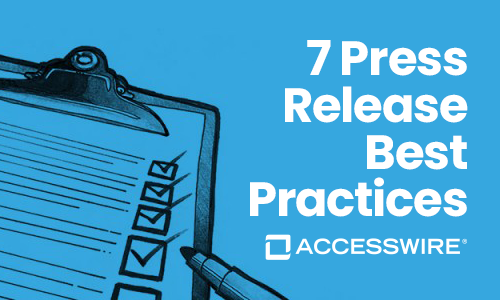How to Develop a Full Communications Plan
So, you’re responsible for creating your company’s communications strategy…congratulations! You have been entrusted with perhaps one of the most important jobs possible: Building a road map that lets your business’s various messages fall into the eyes and ears of your targeted audiences.
You’re good to go, right?
Almost. All that stands between you and your brand’s positively regarded reputation is the creation of a critical road map that covers all the twists, turns, and potential slowdowns that could affect your business’s arrival in the Land of Success. Without that road map, your company stands to aimlessly drive around in circles, missing the desired destination.
What Exactly IS A Communications Plan?
An article in Forbes defines a communications strategy as having a “plan for communicating with your target audience. It includes who you are talking to, why you are talking to them, how and when you will talk to them, what form of communication the content should take and what channels you should use to share it.”
That’s a broad yet accurate definition of essential business objectives. Essentially, communication planning will help you determine the messages your company should be crafting and delivering to your stakeholders, potential investors, shareholders, customers, and employees. Not each message will necessarily be just like the other, although there will be a fair amount of overlap when your messages are created; it’s your communication plan that should identify the differences per each audience to end up with a strategy that is strong and sustainable, with just the right amount of unified messaging.
While most of the communications plans you will create will be intended for positive situations, there is one kind of strategic plan that is just as important as the rest of them: Crisis Communications. Review our thorough Crisis Communications Plan for help developing such a plan for your company.
The Five “Establishment Steps” To Follow
Try to think of any process where no steps are involved in reaching the desired outcome. Even something as basic as brushing your teeth requires steps: First, you need to pick up the tube of toothpaste; next comes opening the cap, followed by squeezing the contents onto the bristles of a toothbrush, and putting that pasted toothbrush onto your teeth while using an up-and-down motion. (At least four out of five dentists confirm these steps – the fifth one is simply wrong – he probably isn’t even a real dentist.) You can’t obtain clean teeth by just opening the tube of toothpaste, right? It would be cool if that’s all it took, but we’ve yet to perfect such a cleaning strategy whereby your dentist will appreciate your thorough efforts via accomplishing one step. Sometimes, you can alter the steps. Let’s say you decide to add flossing before or after you brush––or you elect to rinse your mouth with water at the end. You’ve just enhanced your plan, but the basic steps remain.
There are five critical “Establishment Steps” involved in developing a communications plan template – and these extend to each plan you should need to develop, depending on your audiences:
- Establish the communication goals for your plan.
- Establish the key audience(s) for your plan.
- Establish your company’s key message(s) you need to share.
- Establish your operational/tactical outreach plan.
- Establish a realistic timeline and start date for each communications planning initiative.
Types of Audiences
Now that you have established the contents of your communications plan, it’s time to look at the different types of audiences for which you prepare your strategic communication plan. These are the segments for internal and external audiences, in no particular order:
- Leads/Prospects/Project Management
- Current Customers
- Stakeholders
- Media List: Local/Regional/National/International/Industry Journalists & Media Outlets
- Business Partners & Suppliers
- Creditors
- Shareholders
- Potential & Current Investors
- Local/Regional/National/International Communities
- Government & Regulatory Entities
- Local/Regional/National/International Business Associations
- Employees/Human Resource
- Employment Seekers
- Social Media Followers
- Newsletter Subscribers
Don’t let this list overwhelm you! There should be plenty of crossover messaging. In fact, one of the most critical aspects of your strategic planning, regardless of what audience you’re speaking to, is the existence of unified messaging. Building brand awareness in your segmented audiences is critical to successfully integrating specific themes.
Your Audiences Need To Know…
There’s nothing like the “Five Ws and One H,” when it comes to the questions that will help you identify key messages that go into your communications plan.
- WHO comprises each audience segment? And should certain demographic breakdowns separate them (i.e., age, location, gender, etc.)?
- WHAT do they already know about your company and its business objectives? WHAT do you want them to know? WHAT do/should they like about your company?
- WHEN should you communicate with each audience?
- “We have set up a toll-free number…”
- WHERE are the best platforms to reach them, and how can you encourage engagement (i.e., email, social media, video, advertising, etc.)?
- WHY are they included in their designated communications plan?
- HOW will you measure success in terms of your effective communication plan?
See related: How to Get Media Coverage
Creating A Strong Communications Plan
So far, we have the “Establishment Steps,” the different communications plans you should develop, and the “Five Ws and One H” questions you need answers to before putting your plan into the creation stage.
Now, it’s time to create your full communications plan!
While You Create Your Full Communication Plan…
As you go through the process of creating your company’s full strategic communications plan, incorporate the following tasks and tactics into each segment:
- Review your existing marketing and advertising materials. Chances are in favor of finding some useful parts in your existing internal communication materials. Set these aside, as they may turn into valuable materials that will only require updating and finesse.
- Identify a communication objective or goals for each marketing/advertising materials you want to keep and repurpose. Figure out how the materials you’ve set aside as “keep-worthy,” attach the importance of each, and determine how they will be most helpful…and then, assign the keepers into the appropriate audience segment(s).
- Outline and compose your communication strategy. Make sure that with each segment you write a plan for, you are keeping who the target audience is in mind, and you are writing in such a way that they will respond positively to your messaging.
- Determine the best platforms for each communication channel. Bear in mind that you can increase or decrease the number of platforms as you go along, based on whether or not your audience(s) read/hear your message. Stats will help you understand where your main audience is and allow you to deliver your message where they are digitally.
- Appoint message delivery to your team members and key stakeholders. Making sure each individual you want to develop and deliver the messaging is key to successful delivery. For example, you wouldn’t want your Human Resource director to deliver messaging about accounting or IT, nor would you want your VP of Sales speaking to audiences on behalf of your HR director. Be strategic in your assignments.
- Review your timeline for message deliveries every 4 to 6 weeks. If your timeline was overly-ambitious, that’s okay…it’s better to make sure you aren’t delivering a rushed message, nor do you want to spread out your deadlines too far apart.
- Review the successes and areas that need improvement in your communication efforts. Remember to measure your messaging results to your audiences frequently. Again, if you find one platform is working better than another, don’t be afraid to put more emphasis on that delivery vehicle. Don’t try to fix whatever isn’t broken – look at such reviews as a chance to improve your messages, PR compliance, and platforms across the board.
The Bottom Line
Press release distribution is a powerful way to ensure your audiences are aware of your company’s intentions, changes, movements, and any other news that shines a favorable light! ACCESSWIRE is available 24/7/365 for your news, and with our flat-fee pricing, you will be assured that you are getting your messages in front of the audiences you wish to communicate. Click here to schedule a demo of the easy-to-use ACCESSWIRE platform today!
Similar Blog Posts
PRODUCTS
ACCESSWIRE | All Rights Reserved




